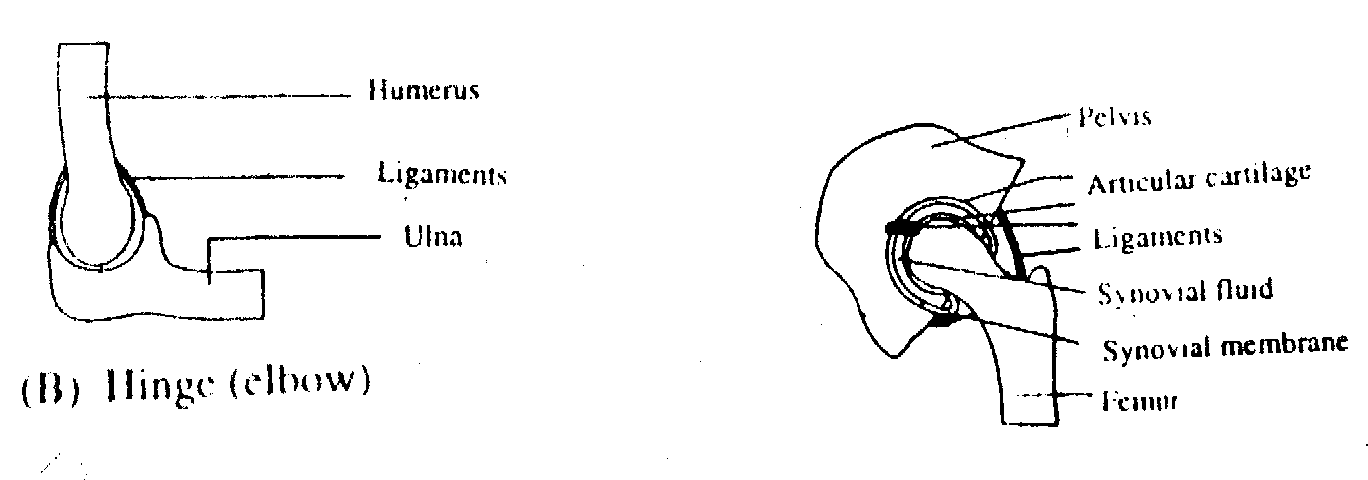|
|
|
SUPPORT, MOVEMENT AND LOCOMOTION
PLANT MOVEMENT
Following are the movements produced by plants.

1. TACTIC MOVEMENT
Itís a movement in which entire plant body moves from one place to another in response to directional stimuli. It takes place in unicellular plants like chlamydomonas and euglena. It also takes place in gametes of mosses and ferns.
2. TROPIC MOVEMENT
It is growth movement of part of plant body in response to the directional stimuli.
a) GEOTROPIC MOVEMENT
Growth movement of parts of plant body in response to the gravity.
b) PHOTOTROPIC MOVEMENT
Growth movement of part of plant body in response to the light stimuli.
c) NASTIC MOVEMENT
It is the movement of part of plant body in response to the diffuse stimuli.
For example,
LOCOMOTION IN PLANTS
a) LOCOMOTION IN EUGLENA
Euglena has single flagellum for locomotion. It moves in zig-zag manner. This type of movement is called euglenoid movement.
b) LOCOMOTION IN VOLVON
Volvon is common fresh water free floating algae. It appears like a minute floating bulls of pin head size. It exist in colony which is motile. The movement is brought up by flagella of the all cells of colony.
SKELETON IN ANIMALS
Skeleton perform following important functions.
1. SUPPORT
In land dwelling vertebrates a rigid skeletal support rises the body from the ground and allows rapid movement.
2. PROTECTION
Skeleton provides protection to the delicate organs of the body.
3. MOVEMENT
Many bones of skeleton act as levers. When muscle pull-on these levers they produce movement.
4. MUSCLES ATTACHMENT
Skeleton provides site of attachment for muscles.
TYPES OF SKELETON
1. EXOSKELETON
Skeleton which is found outside the body. The muscles are attached in the inner side of the skeleton. Many animals of phylum arthropoda, mollusca and echinodermata posses exoskeleton.
2. INTERNAL SKELETON
This skeleton is covered by the muscles. It is composed of bones and cartilages. E.g., vertebrates posses endo or internal skeleton.
ROLE OF SKELETON IN SUPPORT AND MOVEMENT
In land vertebrates there are various methods of locomotion. Most of them move on their legs.
.gif)
JOINTS
The point of approximation of two or more bones is called joint.
.gif)

FIXED JOINTS
No movements takes place at these joints. E.g., joints of skull.
MOVABLE JOINTS
Joints which allow movements are movable joints. E.g., hip joint, shoulder joint.
MUSCLES
Muscles are bundles of myofibers enclosed in sheaths of connective tissues. Following are the types of muscles.
1. SKELETAL (VOLUNTARY MUSCLES)
These muscles are attached with the bones. They are under the control of our will that is why they are called voluntary muscles.
2. SMOOTH MUSCLES
These muscles are found in blood vessels and digestive tract. They are involuntary muscles because their contraction is not under the control of our will.
3. CARDIAC MUSCLES
These muscles are found in heart. They are self excitable and involuntary muscles.
ATTACHMENT OF THE MUSCLES
TENDON
Muscles are attached to the bones by fibrous material called tendon.
ORIGIN
End of muscle where no movement takes place is called origin.
INSERTION
End of muscle where movement takes place is called insertion.
ANTAGONISTIC PAIRS OF MUSCLES
Pair of muscle in which both muscles produce movement opposite to each other.
EXAMPLE
DISORDERS OF HUMAN SKELETON
1. DISLOCATION OF JOINTS
Bones are displaced from their position because of indirect violence or sever jerks to the joints. Symptoms of joint dislocation are swelling, severe pain.
2. ARTHRITIS
Complex disorder produced due to disorder of metabolism and inflamation of structures. It is common disorder of joints in old people.
3. FRACTURE
Bones are fractured or broken as a result of violence or severe jerks to bones. Fracture bones can be jointed by modern techniques of orthopedic surgery.
|
Copyright © 2001 Epoint web center. All Rights Reserved. |